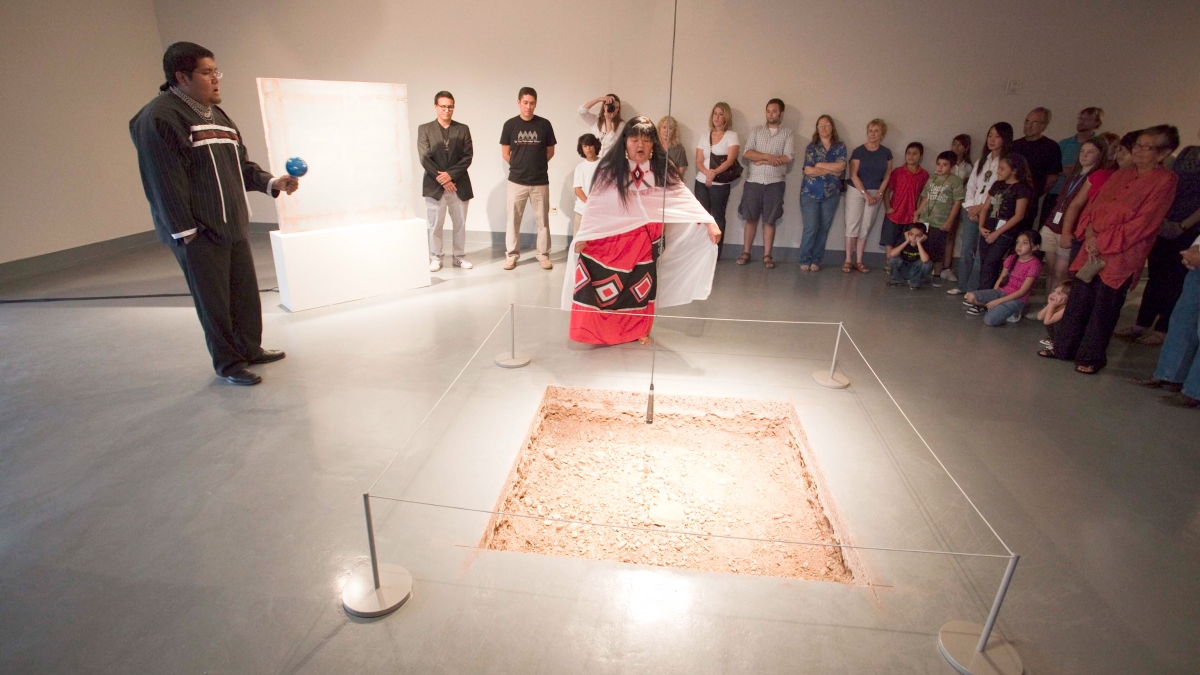Grad students join elite Sydney Biennale art world exhibit

Two ASU graduate students join an elite group of artists exhibiting at the 18th Sydney Biennale, one of the world’s premiere contemporary art events.
Kade Twist, a current Master of Fine Arts student in the ASU School of Art and Cristobal Martinez, an ASU doctoral student and graduate of the School of Arts, Media and Engineering, are the first Arizona State University students invited to share their work at Australia’s largest art exhibit and one that attracts the contemporary art world’s most influential curators, museum professionals, critics and academics.
The two are part of Postcommodity, a Phoenix-based contemporary indigenous artist collective that Twist co-founded and that created “Do You Remember When?,” an installation commissioned in 2009 by the ASU Art Museum, also part of the Herberger Institute for Design and the Arts.
Gerald McMaster, co-curator for the Sydney Biennale, requested this installation from among Postcommodity’s work when he invited the group to participate. The installation required a four-foot square hole cut into the Yirbana Gallery floor in the Art Gallery of New South Wales, one of four major venues for the exhibition. The site-specific installation will also include the artists’ collaboration with New South Wales aboriginals to create a sound component.
According to Twist, the hole and exposed earth “becomes a spiritual, cultural and physical portal – a point of transformation between worlds – from which emerges an Indigenous worldview engaging a discourse on sustainability regionally, nationally and internationally.’’
Twist, a multi-disciplinary artist and member of the Cherokee nation, said he is only the fifth American Indian artist to exhibit in the history of the Sydney Biennale.
“Just to be there where only a small handful of American Indians have been, it puts us into a rarified group,’’ Twist said. “It puts us shoulder to shoulder with blue chip artists and that is absolutely fantastic.’’
“These students’ appearance at the Sydney Biennale places them in league with some of the world’s most provocative, challenging public art practitioners and underscores the Herberger Institute’s leadership in cultivating the exploration of the artist’s relationship to society and art as a way of exploring solutions and understanding,’’ said Kwang-Wu Kim, dean and director of the Herberger Institute.
Postcommodity has enjoyed much recent exposure within the contemporary art world with exhibitions at the Museum of Contemporary Native Arts in Santa Fe, N. M.; the Lawrence Arts Center in Lawrence, Kan. and the Santa Fe Art Institute in addition to exhibits in Belgium, the Czech Republic and the 2012 Adelaide International. This year, Postcommodity will be artists-in residence at the Tucson Museum of Contemporary Art.
Twist sees an invitation to exhibit in these circles as critical to adding the indigenous voice to the broader discourse he says is dominated by Western culture’s perspective.
“Postcommodity works to forge new metaphors capable of rationalizing our shared experiences within this increasingly challenging contemporary environment and to promote a constructive discourse that challenges the social political and economic processes that are destabilizing communities and geographies.’’
He credits the Herberger Institute and the professors and curators within the ASU School of Art and the ASU Art Museum with their support and initial commissioning of the installation three years ago.
“The ASU Art Museum gave me my first art exhibit,’’ Twist said. His work is part of the museum’s permanent collection.
“Kade entered into our graduate program at ASU with a significant body of work and it has been thrilling to witness his technical, formal and conceptual growth,’’ said Adriene Jenik, professor and director of the ASU School of Art. “Having the work of Postcommodity collective included in the 18th Biennale of Sydney signals that the work is being embraced by respected leaders in the global contemporary arts field.”